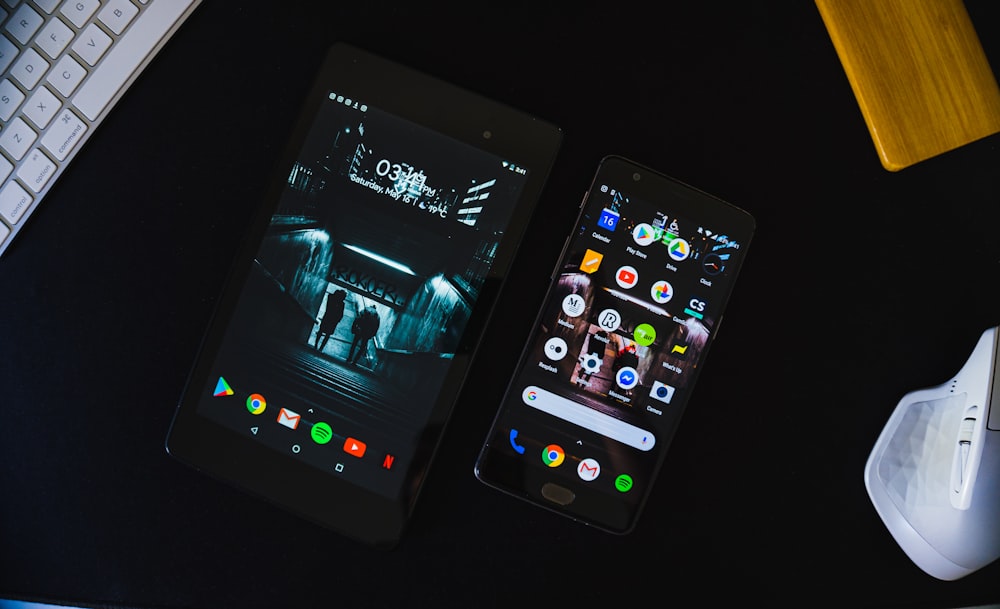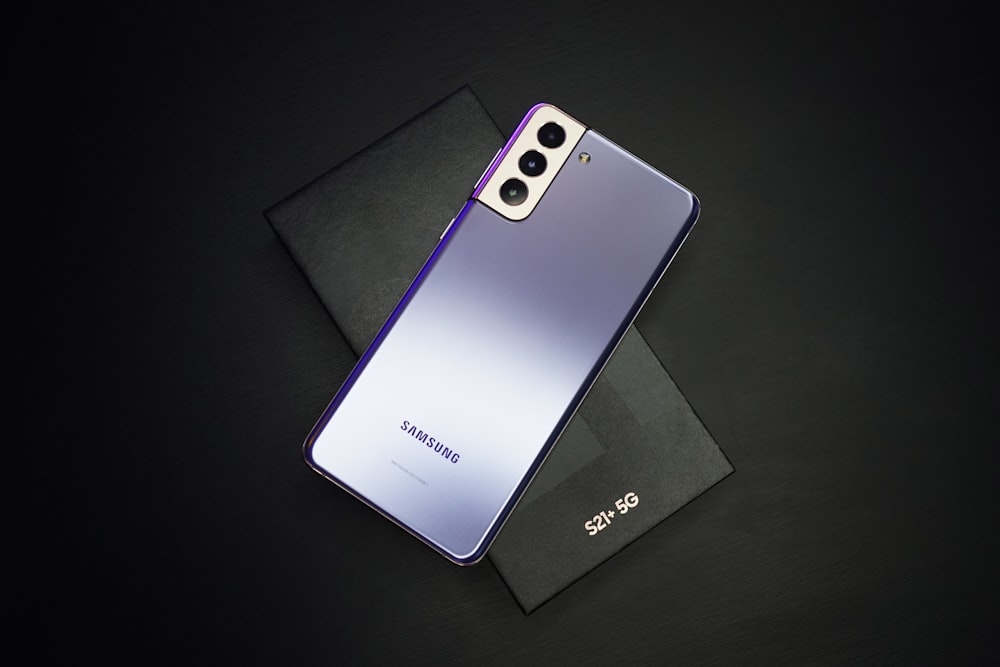Have you ever accidentally deleted important text messages and thought they were lost forever? Don’t panic! There are various methods to recover deleted text messages on Android, depending on factors such as how frequently you back up your data, how recently the messages were deleted, and the messaging app you use. In this comprehensive guide, we will walk you through the step-by-step process of retrieving deleted text messages on Android devices. Whether you use the Google Messages app or the Samsung Messages app, we’ve got you covered.
Can You Recover Deleted Text Messages on Android?
The ability to recover deleted text messages on Android depends on the default messaging app you use. Unfortunately, the Google Messages app does not have a recycle bin, which means that once you click the delete button, your texts are gone forever, unless you have backed them up to the cloud. However, if you use a Samsung or another device running a custom Android version, your messaging app may have a bin. By activating this feature, you can recover accidentally deleted texts within a 30-day window before they are permanently wiped. Alternatively, you can contact the other party in the conversation to see if they have a copy of the messages, as deletion on your end does not affect their copy. There are also data recovery software options available, but be cautious as some may pose security risks.
How to Recover Deleted Text Messages in Google Messages
If you are using the Google Messages app, unfortunately, there is no trash bin or recycle bin feature available. However, there is a possibility that you have accidentally archived the texts instead of deleting them. Archiving a conversation removes it from the main conversation list but does not delete the messages. Here’s how you can unarchive texts in Google Messages on Android phones and tablets:
- Open the Google Messages app.
- Tap your profile icon beside the search icon.
- Select Archived.
- Long press the messages you want to retrieve and tap the unarchive button in the upper-right corner.
If you are using Google Messages on a computer, follow these steps to unarchive texts:
- Go to messages.google.com and follow the on-screen prompts to pair your mobile and computer devices.
- Click the menu icon in the upper-right corner.
- Select Archived.
- Click Unarchive beside a message and then click Done.
How to Recover Deleted Text Messages on Samsung Galaxy Devices
Samsung phones and tablets offer better recovery opportunities for deleted text messages compared to stock Android procedures. The exclusive Samsung Messages app, which comes with Samsung’s custom Android skin, has a recycle bin feature that can be activated in the settings menu. When activated, deleted text messages are moved to the bin for a period of 30 days before being permanently erased. Additionally, Samsung Cloud can be used to back up and retrieve lost messages. It functions similar to Google Drive, allowing you to store data such as call logs, messages, and settings. Another option is Samsung Switch, a data transfer software that backs up data from one device and transfers it to a new one.
Recovering Deleted Texts Through Your Mobile Carrier
Most mobile carriers keep records of your conversations in the form of billing statements. However, these statements usually do not provide details on the content of text messages or display any visual elements within them. Some carriers may retain the actual text of the messages for a few hours, but to access them, you may require a court order. Carriers often offer additional text messaging apps on Android phones that have useful functions for securing messages. For instance, AT&T has AT&T Messages Backup & Sync and Verizon offers Verizon Messages. These apps support backup features, making it easier to recover messages and access them on other devices. Using forensic tools, law enforcement and government agencies may also be able to retrieve deleted data from your device, but this option is typically reserved for extreme cases.
Tips to Avoid Permanently Losing Your Text Messages
Losing important text messages permanently can be a frustrating experience. To safeguard against accidental deletion in the future, here are some tips and tricks:
Archive Messages Instead of Deleting Them
Instead of deleting conversations, consider using the archive feature in Google Messages. Archiving allows you to hide irrelevant or sensitive conversations from the main menu, without having to delete or move them to another device. To archive messages, long press the messages you want to conceal and tap the archive button at the top of the screen. You can easily recover these conversations using the steps mentioned earlier.
Backup Your Text Messages on Google Drive
Activating Google Drive backup on your Android phone is an excellent way to protect your texts from permanent deletion. Google Drive can store various types of data, including installed app data, media files, SMS messages, call history, device settings, and Google account data. Furthermore, you can access your recent backups from other devices. Keep in mind that restoring a backup from Google Drive requires a factory reset of your device during the setup process. Additionally, your backups contribute to your Google Drive storage limit, so consider freeing up space or subscribing to Google One plans if needed.
Use Third-Party Apps to Manage Text Messages
If you prefer not to rely solely on cloud backups or undergo a lengthy factory reset to restore lost data, there are third-party SMS apps available on the Play Store. These apps offer features for organizing, backing up, and recovering texts. One popular example is Pulse SMS, which provides various advanced features such as theme selections, a web version for desktops, Wear OS support, web link previews, password protection, text backup and restoration, and automated replies. Pulse+ subscription offers additional advanced features for a monthly fee.
Protect Your Text Messages from Further Deletion
Android devices utilize a storage management system that tends to overwrite deleted information with new data. While this helps optimize storage usage, it also makes it more challenging to recover deleted messages. To avoid this distress, regularly back up your messages to prevent permanent loss. By logging into any device with your Google account, you can recover your backed-up messages. If you don’t trust your SMS backups or recovery apps, consider preserving important texts by printing them out.
By following these tips and methods, you can increase your chances of recovering deleted text messages on Android devices. Remember to regularly back up your data and consider using secure messaging apps with backup features. If all else fails, reach out to your mobile carrier or the other party involved in the conversation to see if a copy of the messages is available. While data recovery software may seem tempting, exercise caution as some may pose security risks.
Common Mistakes to Avoid When Trying to Recover Deleted Text Messages
Retrieving lost text messages on Android can be tricky. Avoid these common mistakes to improve your chances of recovery:
1. Continuing to Use Your Phone Immediately After Deletion
The moment you realize a text is deleted, stop using your phone. This includes browsing the internet, taking photos, or downloading apps. New data can overwrite the space where your deleted texts reside, permanently erasing them. Instead, switch your device to airplane mode to prevent any updates or new data from coming in.
2. Not Checking Cloud Backups
Often, your texts might be backed up without you realizing it. Before you panic, check your cloud services like Google Drive for Android users or Samsung Cloud for Samsung devices. Navigate through the backup settings to see if your texts were saved recently. It’s also wise to check the settings of your messaging app for any sync or backup options you might have enabled.
3. Rushing into Recovery without Research
In your hurry to get back your messages, you might download the first recovery software you find. However, not all tools are safe or effective. Some might even worsen your situation by installing malware on your device. Spend some time researching, read reviews, and choose a recovery tool with a good reputation. Look for software that specifically mentions compatibility with your device model and Android version.
4. Ignoring Built-In Features
Your Android device might have features to recover recently deleted messages. Before turning to third-party tools, explore your phone’s native capabilities. For example, some devices have a recently deleted folder or recycle bin feature. Familiarize yourself with your messaging app’s settings; there might be a way to retrieve archived or hidden messages.
5. Deleting More Data in Panic
In a state of panic, you might accidentally delete more information or perform actions that could overwrite your lost data. Stay calm and avoid hasty decisions. Don’t clear your cache, don’t uninstall apps, and don’t restart your phone multiple times. Each of these actions could potentially overwrite the memory slots containing your texts.
6. Forgetting About Other Message Sources
Sometimes, your deleted texts might still be accessible through other channels. For instance, if you use a messaging app that syncs across multiple devices, your messages might still be available on another device like a tablet or laptop. Also, consider whether you might have forwarded the important text to email or saved it in a note-taking app.
7. Attempting Complex Solutions Without Guidance
You might come across complex data recovery methods online, like rooting your phone or using specialized software. These methods can be risky and may void your warranty or cause further data loss. If you’re not technically savvy, it’s better to seek help from a professional or a tech-savvy friend instead of attempting these solutions on your own.
8. Not Learning from the Experience
After you’ve managed to recover your messages (or even if you haven’t), take this as a learning opportunity. Set up a regular backup schedule for your phone. Explore and enable backup options in your messaging apps. Also, educate yourself about your phone’s storage and data management settings. This way, you’ll minimize the risk of losing important messages in the future.
Remember, the key to successful data recovery lies in acting swiftly but thoughtfully. Avoid these common pitfalls, and you’ll stand a much better chance of getting your messages back.
Advanced Troubleshooting Tips for Recovering Deleted Text Messages
When basic recovery methods fall short, these advanced troubleshooting tips might help you retrieve those crucial deleted text messages:
1. Use File Browsing Tools
If you’re tech-savvy, use a file browsing tool to navigate your Android’s file system. Look for the “data” folders within apps. Messaging apps store messages in databases within these folders. However, access might require root privileges, which carries risks and could void warranties.
2. Explore Hidden Directories
Android devices have hidden directories where data might still exist. Tools like Android File Transfer for Mac or similar applications for Windows can help explore these. Look for folders named “trash” or “archived” that might contain backups of your messages.
3. Utilize ADB Commands
The Android Debug Bridge (ADB) is a powerful tool that can access device data without root access. You can use ADB commands to pull files from your device. This requires some technical know-how, as incorrect commands can lead to data loss.
4. Check for Local Backups
Some Android devices automatically create local backups in your phone’s internal storage or SD card. These backups can sometimes include texts. Search through your phone’s storage using a file manager app for any backup folders from your messaging app.
5. Contact Your Mobile Carrier
While a long shot, some carriers might store texts temporarily for troubleshooting purposes. Contact your carrier’s customer service and inquire if they can assist in recovering lost messages. Be prepared to provide necessary identification and account details.
6. Retrieve Data from Broken or Non-Responsive Phones
If your phone is broken but still turns on, try connecting it to a computer or using a USB OTG cable with a mouse to navigate the phone. If the screen is the issue, software solutions can mirror your phone’s display to a computer, allowing you to access and back up data.
7. Professional Data Recovery Services
If the data is extremely valuable and other methods fail, consider professional data recovery services. These services can be costly and there’s no guarantee of success, but they use advanced techniques that might retrieve lost data.
8. Regularly Review and Update Backup Settings
Ensure your backup settings are always up to date. Regularly check that your backups are occurring as scheduled. Consider using multiple backup services to minimize the risk of complete data loss.
9. Test Recovery Processes Periodically
Just as you might conduct fire drills, periodically test your message recovery process to ensure it works. This can help you familiarize yourself with the recovery process and iron out any kinks without the pressure of having lost data.
10. Keep Your Device Software Updated
Software updates often contain fixes for bugs that might affect data storage and recovery. Keep your device updated to ensure you have the latest protections and features. However, always back up your device before updating, as updates can sometimes lead to data loss.
By incorporating these advanced troubleshooting tips, you have a better chance of recovering deleted text messages. However, always proceed with caution and consider professional help if you’re unsure.
Wrapping Up
Losing crucial text messages can trigger a wave of panic and frustration. However, as we’ve explored in this comprehensive guide, there is a beacon of hope. The journey to retrieve deleted text messages on Android is fraught with challenges, yet armed with the right knowledge and tools, recovery is within your grasp. This guide has provided a roadmap, from the simplest solutions to more advanced troubleshooting methods, designed to navigate the complexities of data recovery.
The first step in this journey is prevention. Regular backups to cloud services or local storage can transform a potential disaster into a minor inconvenience. Take the time to set up these systems and familiarize yourself with how they work. Understanding the ins and outs of your device’s backup options means that, should the worst happen, you’re prepared and protected.
When faced with the loss of important messages, remember the importance of acting swiftly and thoughtfully. Avoid common pitfalls such as continued phone use, which can overwrite the very data you seek to recover. Instead, pause and assess the situation, then proceed with the recovery methods detailed in this guide, starting with the simplest and moving to the more complex if necessary.
Beyond technical steps, this guide emphasizes the importance of a calm and methodical approach. Panic can lead to mistakes that further complicate recovery efforts. By staying calm and following the steps outlined, you maintain clear thinking and improve your chances of successful data retrieval.
However, this guide does more than offer recovery solutions; it is a call to action for proactive data management. Regular reviews and updates of your backup settings ensure that your data protection measures evolve with your needs. Periodic testing of these systems ensures that you are never caught off guard. In the digital age, where data is both precious and precarious, such vigilance is not just advisable—it is essential.
Lastly, the guide acknowledges that despite our best efforts, some data may be irretrievable. In these moments, it’s important to learn from the experience and strengthen your data protection strategies moving forward. Loss can be a powerful teacher, guiding us towards better practices and reminding us of the value of our digital data.
In conclusion, while the disappearance of text messages on Android can seem like an irrevocable loss, this guide offers a beacon of hope. With the right preparation, knowledge, and tools, you can navigate the murky waters of data recovery. Remember, your messages might not be gone for good. Equipped with this guide, you’re ready to tackle the challenge head-on, turning potential despair into relief and recovery. Let this experience empower you, enhancing your data management strategies and ensuring that your digital life remains secure and recoverable, now and in the future.
FAQ: Retrieving Deleted Text Messages on Android
Can you recover deleted text messages on Android?
Yes, you can recover deleted text messages on Android. Use data recovery tools or check your backups.
Can I get deleted text messages back?
Yes, you can get them back. Try recovery tools or look at your cloud backups.
Where are text messages stored on Android?
Text messages are stored in the phone’s internal memory or SIM card.
Are deleted text messages gone forever?
Not always. You might recover them through backups or recovery software.
Are text messages backed up on Android?
Yes, they can be backed up to Google Drive or other cloud services.
How far back can text messages be retrieved?
It depends on your backup settings and storage space. Some can go back months or even years.
Are deleted text messages gone forever on Android?
Not necessarily. With the right tools or backups, you can recover them.
Where is my recycle bin for text messages?
Android does not have a built-in recycle bin for text messages. Check your backup or recovery app.
How do I retrieve deleted text messages on my Samsung?
Use Samsung’s Smart Switch app or look through your Samsung Cloud backups. You may also try third-party recovery tools.
Featured Image Credit: Photo by Christian Wiediger; Unsplash – Thank you!


